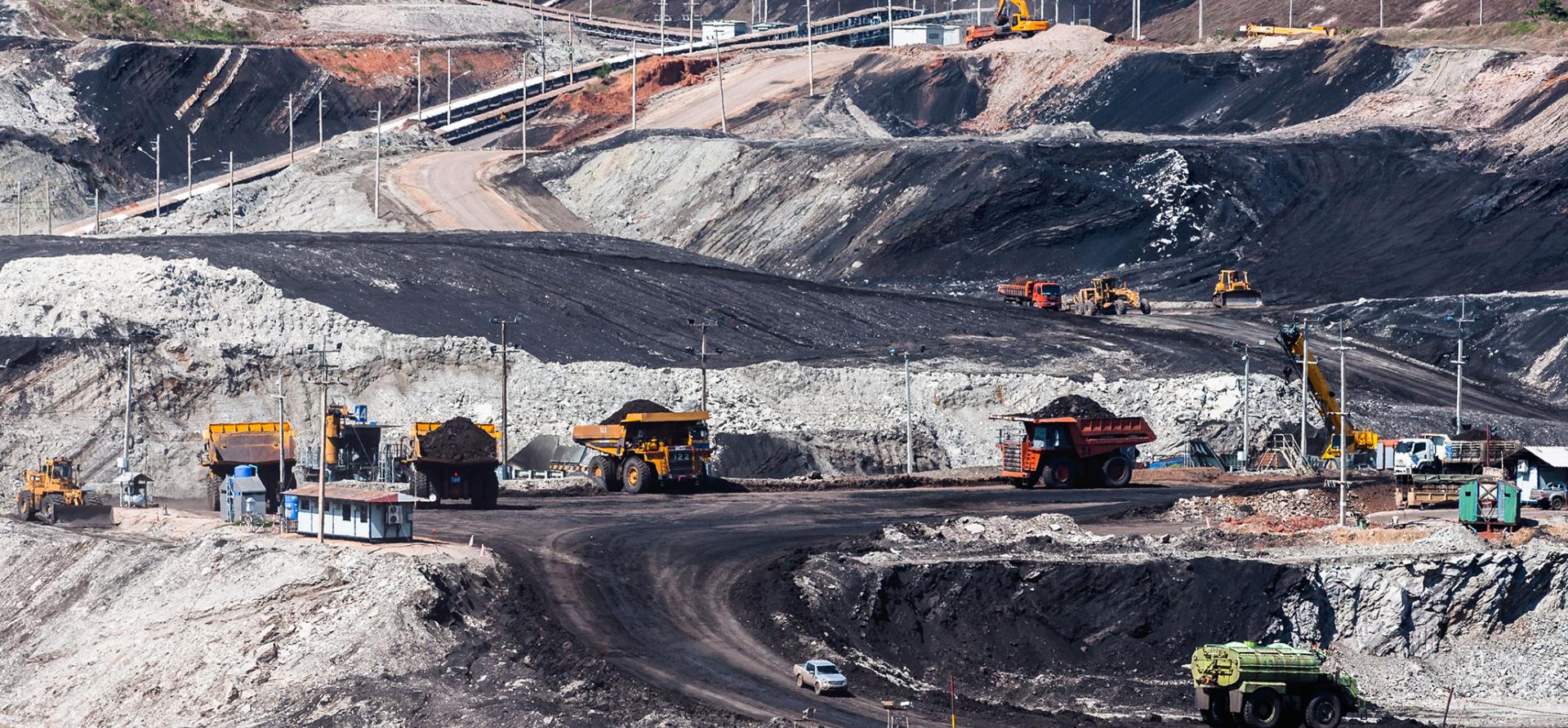Australian thermal coal exports outlook – Volumes set to fall amid accelerating energy transition
Download Full Report
View Press Release

Key Findings
Demand for Australian thermal coal will be set by the policies and actions of governments and companies in coal-importing Asian nations.
Australia’s traditional export coal markets—Japan, China, South Korea and Taiwan—are all shifting away from reliance on imported thermal coal in the long term.
Thermal coal imports will decline soonest in Australia’s most established export destinations—Japan, South Korea and Taiwan.
Executive Summary
The global energy transition away from fossil fuels is accelerating, unhindered by the COVID-19 pandemic. The long-term outlook for Australian thermal coal exports is only declining faster.
Following the Russian invasion of Ukraine in February 2022, European imports of coal from exporting nations such as Australia have risen in a bid to replace Russian coal and gas. However, this will not mark the start of a renaissance for coal-fired power. Key financial institutions such as JPMorgan Chase, BlackRock and Moody’s have concluded that heightened energy security concerns and record fossil fuel prices will only accelerate the transition away from thermal coal.
Although Germany intends to extend the life of mothballed coal power capacity for two years, it has also recently approved a US$180 billion funding package to accelerate its energy transition.
Demand for Australian thermal coal will be set by the policies and actions of governments and companies in coal-importing Asian nations.
This will have significant implications for Australian thermal coal exports, most of which come from the state of New South Wales (NSW). In the longer term, the NSW Treasury has concluded that “global demand for coal is expected to weaken considerably”, further noting that “declining global demand for coal will reduce New South Wales’ economic growth over the projection period and will have impacts both on employment and the fiscal outlook”.
Ultimately, demand for Australian thermal coal will be set by the policies and actions of governments and companies in coal-importing Asian nations. The current status and outlook for coal-fired power in these nations has far more impact on the future of Australian thermal coal than the policies and ambitions of the Australian coal industry and state and federal governments.
Thermal Coal Exports: Long-term Outlook
Under the NSW Treasury’s low global coal demand scenario for its 2021 Intergenerational Report, coal production in Australia’s main thermal coal producing state would reach zero by 2042. The risk the thermal coal sector now faces is that the accelerating global energy transition, driven faster by increasing action on carbon emissions, is pushing the world towards such a low demand scenario.
Australia’s traditional export coal markets—Japan, China, South Korea and Taiwan—are all shifting away from reliance on imported thermal coal in the long term.
Japan: As Australia’s largest thermal coal export destination, Japan’s pledge to achieve zero carbon emissions by 2050 is highly significant. Japan also increased its 2030 emissions reduction target from 26% to at least 46% at the April 2021 climate summit hosted by the U.S. As a result, Japan’s new 2030 power plan increases its focus on renewables and will see reliance on coal- and LNG-fired power reduce significantly. It is also recommitting to nuclear power. Australia will be particularly impacted by this shift.
The new power plan will see the share of coal power generation drop from 32% in 2019–20 to 19% in 2030. As a result, Japan’s consumption of coal will fall by almost 54 million tonnes per annum by 2030 according to calculations by Argus Media, a drop of 46%. To fill the gap, Japan is planning that renewable energy will make up 36–38% of the power mix by 2030, up from 18% in 2019–20.
China: In 2019, China was Australia’s second-biggest thermal coal export destination. This changed significantly in the second half of 2020 when a diplomatic spat led to a ban on coal imports from Australia. However, the bigger risk to Australian thermal coal exporters is not diplomatic tensions but China’s clear plan to become self-sufficient for thermal coal in the medium term. China is increasing domestic coal production and rail capacity with the intention of replacing imports.
A 2022 study on Chinese coal demand found that its seaborne thermal coal imports are likely to fall substantially over the coming decade and are on course to drop 26% on 2019 levels by as soon as 2025.
The Chinese government surprised many in September 2020 when it announced that it was targeting zero carbon emissions by 2060. Increased emphasis on renewable energy will also squeeze out thermal coal imports. 2022 is set to be another record year for Chinese renewable energy installation with additions of
156 gigawatts (GW) of solar and wind power forecast, a 25% uplift from the 2021 record. President Xi Jinping has stated that China’s coal consumption will peak in 2025 and decline thereafter.
South Korea: South Korea is the fourth-largest coal importing country in the world. In October 2020, the South Korean government announced its target to reach zero carbon emissions by 2050, in line with Japan. One year later the South Korean government approved two roadmaps to reach carbon neutrality by 2050. Under both options, coal-fired power is completely phased out by 2050. Almost half the South Korean coal fleet is to be retired by 2034.
At the same time, South Korea’s new 2030 emissions reduction target was approved by the government, which will see total carbon emissions reduce by 40% compared to 2018 levels. This new 2030 target means that coal’s share in the South Korean power mix will almost halve by 2030 to 21%, down from 42% in 2018. Renewable’s share in the power mix is targeted to increase to 22% by 2030, up from 6% in 2018.
Taiwan: In March 2022, Taiwan’s National Development Council—the government’s planning body—revealed its 2050 zero carbon emissions roadmap. Taiwan plans to fully decarbonise its power sector by 2050 with renewable energy providing 60–70% of power generation. The government and state-owned companies plan to invest US$32 billion on renewables, energy storage and grid infrastructure between 2022 and 2030.
Over the last six years the pipeline of proposed coal-fired power plants has shrunk from 2.4GW to zero after a series of project cancellations. Coal-fired power’s share of overall electricity generation is expected to decline from 45% to 30% by 2025. As a result, the Australian Government’s Department of Industry, Science and Resources expects that thermal coal imports into Taiwan—along with those of Japan, China and South Korea—will start to go into decline this decade.
Other Markets
A number of nations including India, Vietnam, Bangladesh, Pakistan and Malaysia have previously been identified as growth markets for Australian coal exporters. However, with the pace of the energy technology transition accelerating, and finance for coal power increasingly hard to come by, the opportunity for export growth into these markets has fallen away.
The opportunity for export growth into (non-traditional) markets has fallen away.
India: Like China, thermal coal imports into India make up only a fraction of total consumption with far more thermal coal mined domestically. India has an ambition to become self-reliant for thermal coal amid its rapid renewable energy roll-out.
The increased energy security concerns following the invasion of Ukraine and the resultant high cost of fossil fuel imports is likely to see increased efforts to substitute imported coal with domestic product. Moody’s Investor Services expects that “large coal-importing countries such as China and India will also seek to ramp up domestic coal production to enhance energy security and reduce reliance on coal imports”. Indian Minister of Power and New & Renewable Energy R. K. Singh has made it clear he believes the energy crisis will hasten the energy transition from fossil fuels to renewable energy.
Vietnam: With many proposed coal-fired power projects languishing without finance and little prospect of construction, Vietnam has begun distancing itself from coal power. At the 2021 UN Climate Change Conference in Glasgow (COP26 summit), Vietnam pledged to reach zero carbon emissions by 2050 and committed to stop building new coal plants. Vietnam’s coal-fired power pipeline—which was already looking increasingly unlikely to reach construction given a lack of financing—now looks even more uncertain.
Bangladesh: Prompted by the increasing difficulty of getting finance for coal-fired power as more banks withdraw lending for coal, the Bangladesh government cancelled 10 proposed coal-fired power projects in June 2021. In June 2022, the planned Matarbari 2 coal-fired power plant came to a halt after the Japan International Cooperation Agency withdrew finance for the project.
Pakistan: The Pakistan government announced at the December 2020 Climate Ambition Summit that it “will not have any more power based on coal”. However, Pakistan had already turned away from power plants fuelled by imported thermal coal in favour of its own domestic coal reserves. Several proposed plants that were to be fuelled by coal imports have been cancelled. In the face of record seaborne thermal coal prices, the government is also considering converting existing plants from imported coal to domestic coal.
Under the base case, NSW Treasury forecasts that employment in coal mining will decline by an average of 600 jobs per year over the next two decades.
Malaysia: In August 2022, state-owned power utility Tenaga Nasional Berhad (TNB)—Malaysia’s largest power provider—announced plans to accelerate the closure of some of its coal-fired power plants to speed up its transition to renewable energy. TNB is targeting a 50% reduction in coal-fired power capacity by 2035.
Impact on Coal Royalties and Jobs
Under the NSW Treasury’s lower global coal demand scenario for the 2021 Intergenerational Report—completed prior to the shorter-term impact of the Russian invasion of Ukraine—coal royalties decline to zero by 2042. Even in the base case, annual coal royalties decline to around a third of current levels over the coming decades. Similarly, the NSW Treasury forecasts a major decline in coal mining jobs—between 75% and 100% fewer jobs in the sector by 2061. Under the base case, NSW Treasury forecasts that employment in coal mining will decline by an average of 600 jobs per year over the next two decades.
The accelerating pace of the energy technology transition has significant implications for the Australian coal industry. In the longer term, the shift of Asian nations towards more reliance on renewable energy and domestic coal will see volumes of Australian thermal coal exports fall significantly. This process is outside of the control of Australian state and federal governments.
Thermal coal imports will decline soonest in Australia’s most established export destinations—Japan, South Korea and Taiwan.
A transition away from reliance on coal over the coming decades is now certain, the only question remaining is whether that transition will be planned and orderly or chaotic.

















